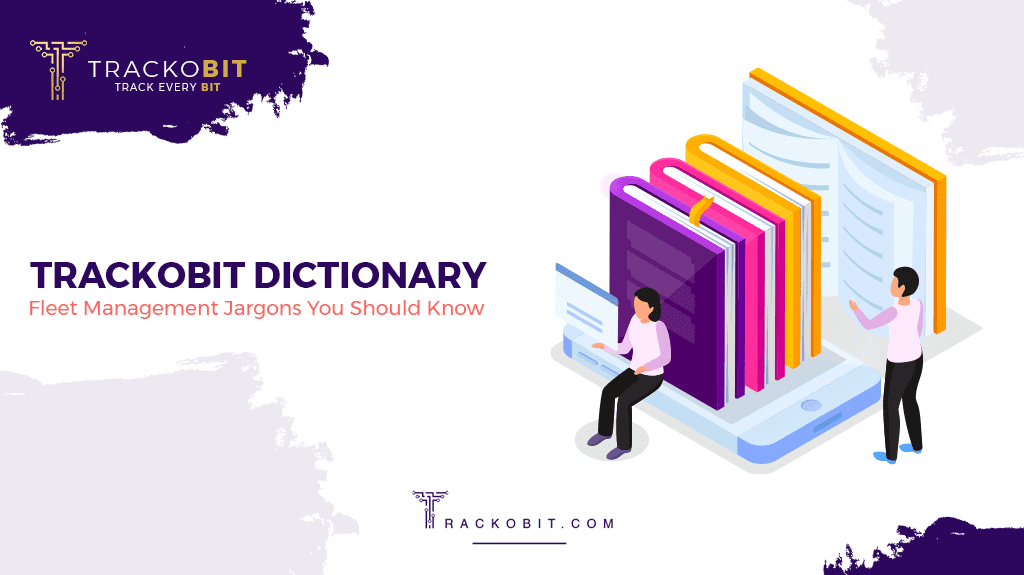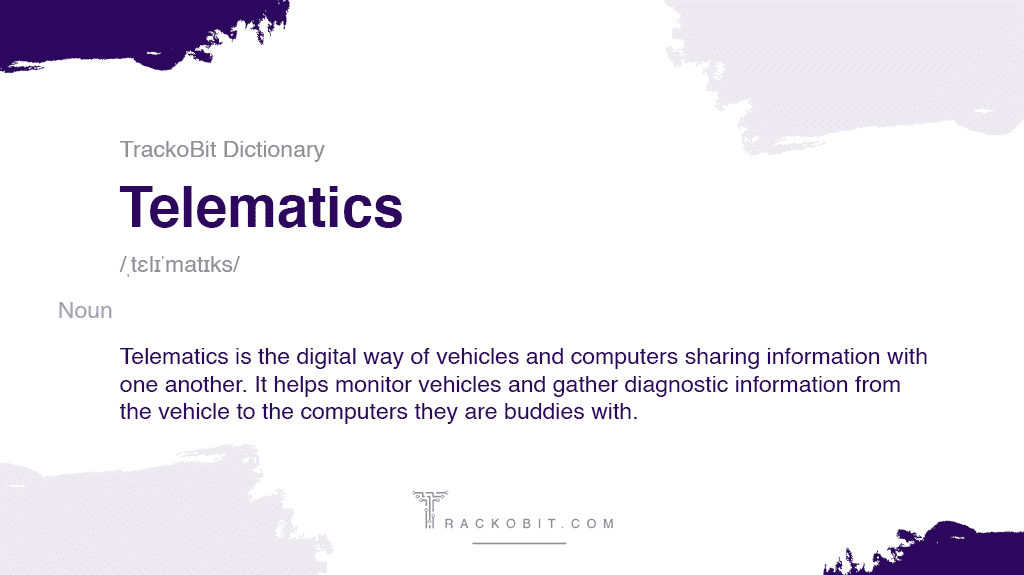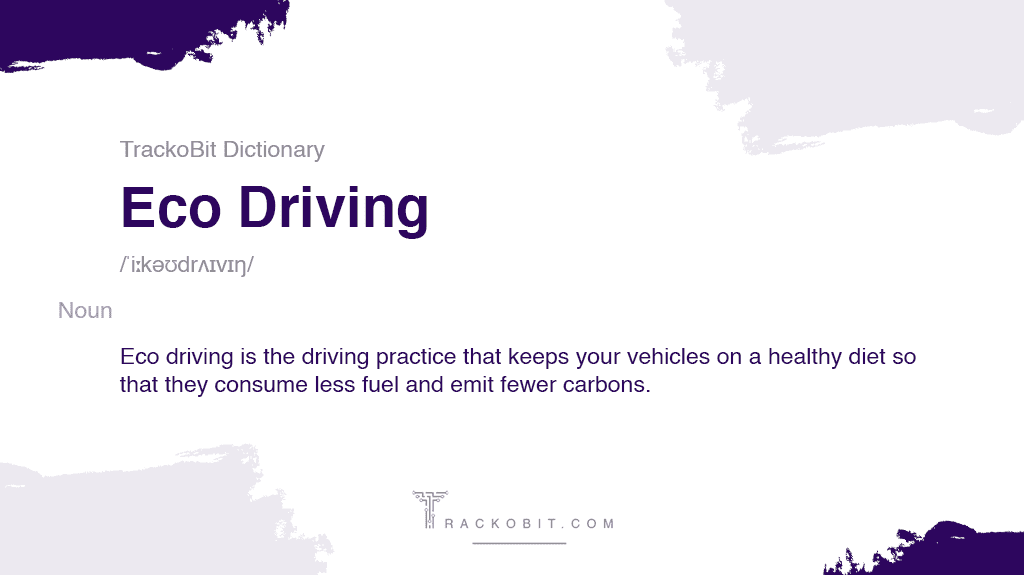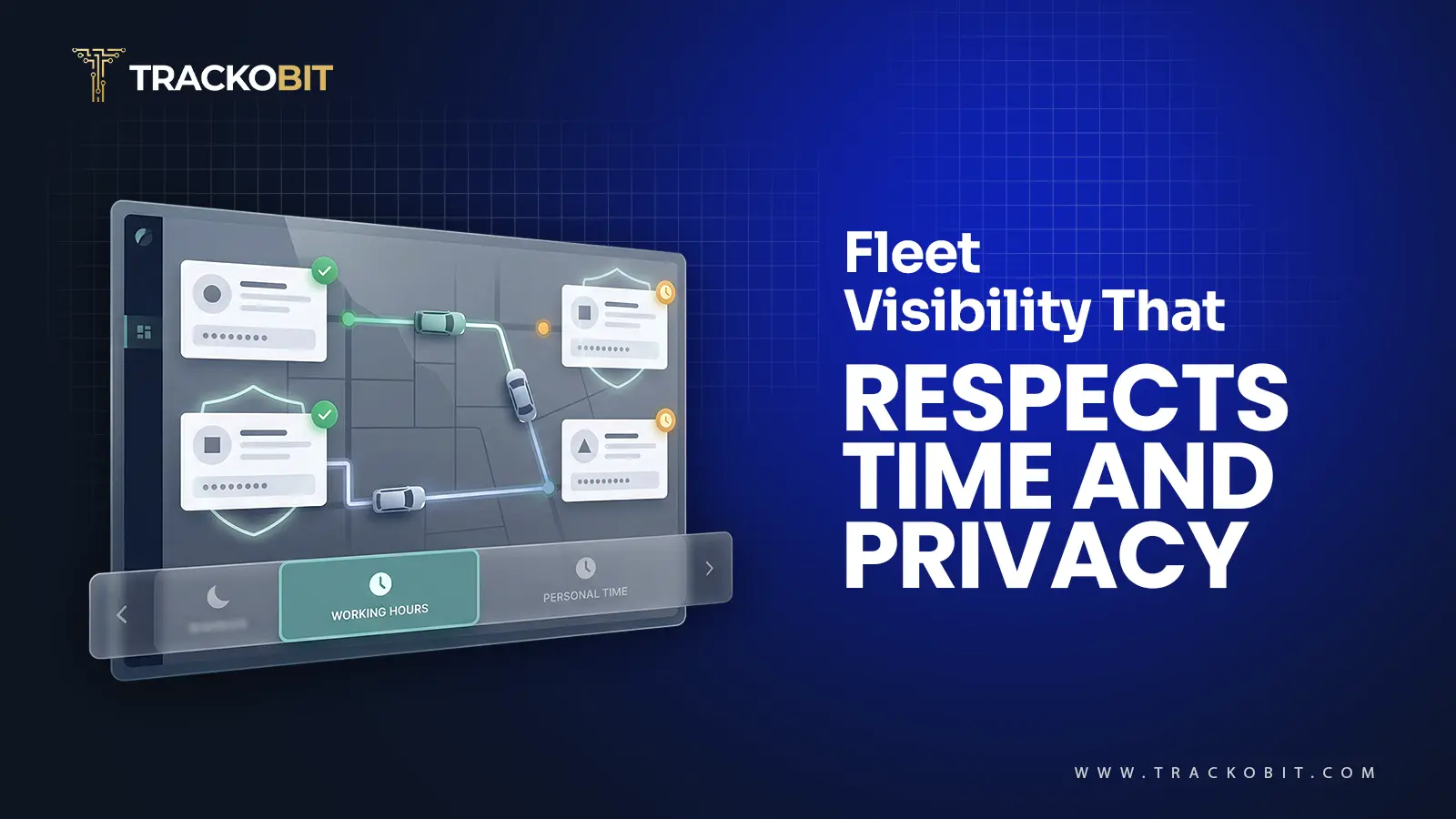-
TrackoBit
Manage commercial vehicles with the new-age Fleet Management Software
TrackoBit -
TrackoField
Streamline your scattered workforce with Field Force Management Software
TrackoField -
Features Resources
-
Blog
Carefully curated articles to update you on industrial trends. -
White Paper
Insightful papers and analysis on essential subject matters. -
Glossary
Explore an alphabetical list of relevant industry terms. -
What’s New
Get TrackoBit & TrackoField monthly updates here. -
Case Study
Explore the cases we solved with our diverse solutions. -
Comparisons
Compare platforms, features, and pricing to find your best fit.
-
About Us
Get to know TrackoBit: our team, ethos, values, and vision. -
Careers
Join the most dynamic cult of coders, creatives and changemakers. -
Tech Support
Learn about our technical support team and services in detail. -
Events
Check out the exhibitions where we left our marks and conquered. -
Contact Us
Connect with us and let us know how we can be of service.
TrackoBit Dictionary: Fleet Management Software Terms Users Must Know
- Author:Ayushi Nagalia
- Read Time:5 min
- Published:
- Last Update: February 3, 2025
Table of Contents
Toggle
Every industry has a set of jargon that nobody from the outside seems to understand. However, without that jargon working within the industry can be tricky.
Table of Contents
Toggle
The fleet industry is no different. If you do not know some jargon, you might not be able to work with fleet management software systems.
Are you new to the fleet industry and want to know what everyone has been talking of? You’re in the right place! In this blog, let us talk about some of the most commonly used terms you should know from the fleet management industry.
Fleet Management Software
Fleet management software is a cloud-based software that allows you to keep track of your vehicle’s geospatial and operational information. With fleet management software, you always know your vehicle’s whereabouts, engine health, and operational efficiency. Its primary function is to streamline, optimize, manage, and cooperate vehicles in a fleet from a centralized platform.
With the tools in fleet management software solutions, you can supervise drivers, operations, vehicles, and consignments from anywhere. Fleet management software is a culmination of efficiency-boosting features such as real-time tracking, fuel monitoring, driver analysis, and report formation.
GPS Tracking Software
GPS tracking software is a platform that helps you check where your assets are in real-time. With the help of GPS tracking software, you can track the exact location of your fleet down to lat-long information, direction, and speed.
With the help of GPS tracking software, you can see all your vehicles as dots on a map. Therefore, you can relax knowing that your vehicles, drivers, and consignment are safe on the field.
Have you heard GPS tracking software and fleet management software being used interchangeably? Here’s why that’s incorrect!
Real-time Tracking
Live tracking or real-time tracking is the most basic yet important feature in fleet management. The term is pretty self-explanatory; it means tracking (vehicles) down to a second. This means, that wherever your vehicles are at that exact moment, your GPS tracking or fleet management software will reflect.
Real-time tracking is a term mostly used in the premise of locational data. However, it can also be used in the context of tracking operational data such as tire pressure, fuel consumption, etc.
Estimated Time of Arrival and Proof and Delivery
With real-time tracking on any fleet management software, you can get accurate Estimated Time of Arrival (ETA). This means, that when your vehicle is running, you can tell in real-time when is the best possible time that it will reach its destination.
Fleet management systems also help you get accurate proof of delivery (POD) through geospatial information. PODs can even be more authentic with the help of digital signatures, OTPs, or code scanning.
Video Telematics

Before video telematics, let’s understand what vehicle telematics is. Telematics is simply the way vehicles and computers share information. Through telematics software, vehicles can share diagnostic data with software and software can share instructions with vehicles (for automated functions such as immobilization).
Video telematics is adding visual devices such as front and rear dash cams onto the fleet management system. This way, you can always keep an eye on your vehicle’s interior and exterior.
Driver Behavior Monitoring
Driver behavior monitoring or driver management system is the way of supervising how your drivers are driving your vehicles. It is through driver behavior analysis that you can tell which drivers are being naughty or nice.
Through video telematics, OBD data, and geospatial information, you can tell when drivers are distracted or are resorting to risky driving.
Geofence and Point of Interest (POI)
Good fences make good neighbors and that is exactly what geofences are for!
Geofences are virtual boundaries and perimeters that you can set over physical locations through GPS tracking software.
Points of Interest serve similar functions to geofences. However, instead of being flexible boundaries, they are standalone points that cover the nearby areas to a specific radius.
Both geofences and points of interest are wonderful for letting fleet managers know whenever vehicles enter or exit specific areas through alerts.
On-board Diagnostics
On-board diagnostics (OBD) is a system that allows vehicles to self-diagnose their internal functioning such as engine health, odometer reading, etc. OBD systems allow vehicles to share such information with drivers so that technicians and managers get an idea of the internal condition of a vehicle.
OBD data helps maintain vehicle health for optimum performance and efficiency in a fleet. It also helps generate insightful data reports that can help you get a closer look into your complete fleet’s functioning.
Fuel Management
Fuel management is tracking and managing the inflow and outflow of fuel in all the vehicles in your fleet. This means that fuel management systems help you get insights on how frequently and how much you feed your vehicles and how long it takes them to consume all that fuel.
It is through fuel monitoring systems that you get a detailed understanding of your vehicle’s mileage and similar metrics. Therefore, you can accurately decipher fuel economy and maintain the balance between operative costs and gains.
Eco-Driving

Eco-driving is the driving practice that keeps your vehicles on a healthy diet so that they consume less fuel and emit fewer carbons.
There are several eco-driving practices included in eco-driving. These include maintaining ceratin speed and accelerating and braking normally.
Vehicle Idling
Vehicle idling is a big no-no for eco-driving and fuel consumption cutting. It is when your vehicle’s engine is running but the vehicle itself is not running. This could be for several reasons such as traffic, stop signals, or irresponsible driving. However, whatever may the reason be, vehicle idling leads to massive fuel wastage.
Route Optimization
Route optimization is devising a route from a vehicle’s beginning and destination points so that it consumes the least amount of fuel and time while covering all midpoints. It is using geospatial information to map the directions your driver should follow to conduct their task(s).
Route deviation, on the other hand, is a term used for when drivers deviate from the optimized route planned for them. Through your telematics software. You will receive route deviation alerts so that you can keep your fleet efficient through proper supervision.
Advanced Driver Assitance Systems
Advanced Driver Assitance Systems (ADAS) are vehicle automation systems that help drivers prevent collisions on road through strong vehicular communication.
ADAS needs video telematics and V2X communication so that telematics software can detect when there are pedestrians, other vehicles, infrastructure, or road signals on the way. ADAS is the next step to vehicle automation that will help actualize self-driving cars.
Sim-based Tracking
GPS tracking systems track vehicles’ whereabouts with GPS devices and the GNSS network. However, sim-based tracking does the same through your device’s mobile network.
Therefore, for places where GPS systems might not work, fleet managers use sim-based tracking to know where their vehicles are. All they have to do is place a sim or sim-based device in the vehicle and start tracking through their fleet management software.
IMEI Number
International Mobile Equipment Identity (IMEI) number is a crucial element for sim-based and GPS vehicle tracking. It is a unique 15-digit number assigned to each device like its fingerprint. It is the device’s IMEI number that helps manufacturers and managers track mobile or satellite phones.
Ayushi Nagalia is a Senior Content Specialist at TrackoBit. She is a marketing maverick with a lush background in literature. With years of experience crafting content for various niches, she speciali... Read More
Related Blogs
-

When Tracking Needs a Clock: Rethinking Fleet Visibility
Tithi Agarwal December 24, 2025Read on to understand why fleet tracking works better when it follows working hours. Because visibility should support operations, not…
-

What Makes TrackoBit’s Video Telematics Software Truly Next-Gen?
Shemanti Ghosh December 17, 2025TrackoBit’s video telematics software blends smart video intelligence with full server control. The result? Superior fleet reliability and safety.
-

Plug, Pair, Perform TrackoBit Introduces BLE Sensor Integration
Tithi Agarwal November 26, 2025TrackoBit’s BLE Sensor Integration enables wireless, real-time monitoring with faster installs and accurate insights. It improves fleet efficiency, visibility, and…
-

How to Use Driver Behavior Reports as a Sales Hook to Close Big Fleets
Tithi Agarwal October 16, 2025TrackoBit’s driver behavior reports empower fleet providers to win big contracts by showcasing safety, efficiency, and measurable ROI.

Subscribe for weekly tips to optimize your fleet’s potential!
Your inbox awaits a welcome email. Stay tuned for the latest blog updates & expert insights.
"While you're here, dive into some more reads or grab quick bites from our social platforms!"Stay Updated on tech, telematics and mobility. Don't miss out on the latest in the industry.
We use cookies to enhance and personalize your browsing experience. By continuing to use our website, you agree to our Privacy Policy.

































